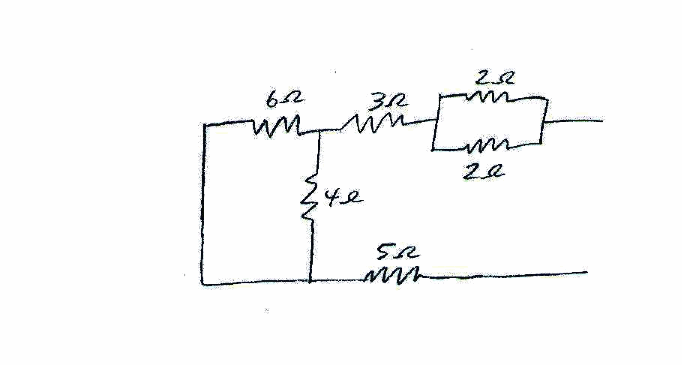| Line 1: | Line 1: | ||
[[Category:2015 Spring ECE 201 Peleato]][[Category:2015 Spring ECE 201 Peleato]][[Category:2015 Spring ECE 201 Peleato]][[Category:2015 Spring ECE 201 Peleato]][[Category:2015 Spring ECE 201 Peleato]] | [[Category:2015 Spring ECE 201 Peleato]][[Category:2015 Spring ECE 201 Peleato]][[Category:2015 Spring ECE 201 Peleato]][[Category:2015 Spring ECE 201 Peleato]][[Category:2015 Spring ECE 201 Peleato]] | ||
| − | |||
| − | |||
| − | |||
| − | |||
[[Category:ECE201]] | [[Category:ECE201]] | ||
Revision as of 08:20, 13 April 2015
Practice question for ECE201: "Linear circuit analysis I"
By: ECE student Paul Wonnacott
Topic: Equivalent Resistor Network
Question
Determine the equivalent resistance of the resistor network shown below.
Answer
First, combine the two 2 ohm resistors that are in parallel to get a 1 ohm resistor. Sum this with the 3 ohm since they are in series to get 4 ohms. Then combine the 6 and the vertically oriented 4 ohm resistors in parallel to get a 2.4 ohm resistor. Add this with the 4 and 5 ohms that are in series to get an equivalent resistance of 11.4 ohms.
Questions and comments
If you have any questions, comments, etc. please post them below
Back to 2015 Spring ECE 201 Peleato


